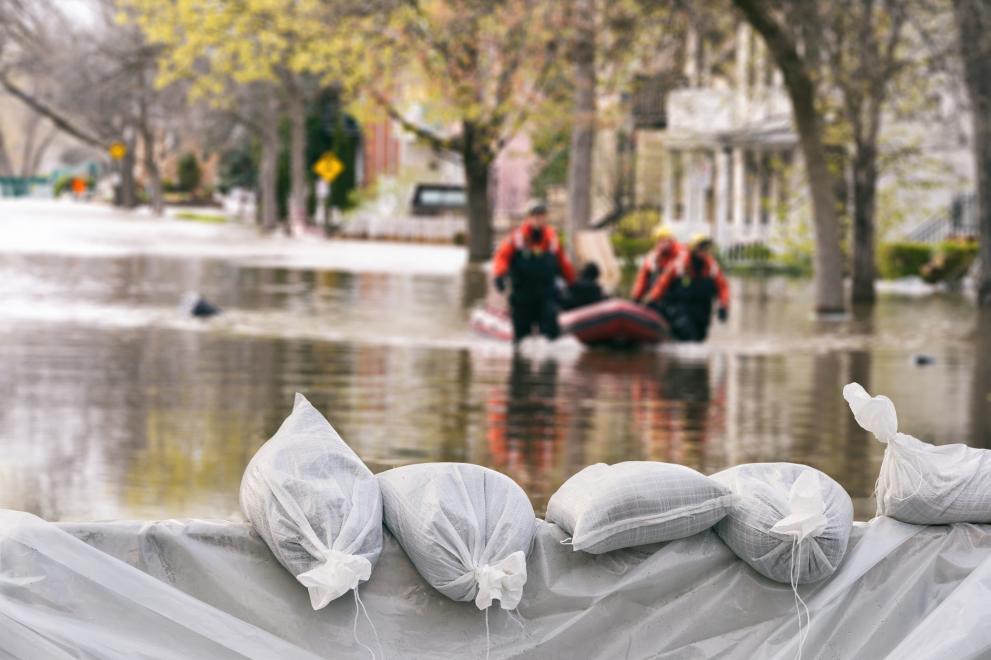
Societies worldwide have become more resilient to climate disasters but climate change is likely to result in an unprecedented rise in climate extremes, which will challenge the climate resilience and adaptive capacity of our societies.
A recent JRC study shows that over the last four decades, societies around the world have increased their capacity to cope with climate disasters.
The findings indicate that adaptation represents an opportunity to make our societies more resilient and minimize future impacts of climate change in Europe.
From 1980 to 2016, the occurrence of climate extremes, their death tolls and economic losses continued to rise in many parts of the world.
Global warming, fuelled by demographic change and urbanisation, is likely to result in more people and economic value being exposed to climate extremes in the decades to come.
This means that societies will need to adapt and better protect themselves against these hazards, which is also one of the main messages of the Paris Agreement on climate.
Mapping past disaster exposure and their impacts
In order to better understand the capacity to cope with climate extremes of societies around the world, researchers of the JRC studied global trends in resilience since 1980.
The scientists looked at impacts of 7 climate extremes: floods, flash floods, coastal floods, cold related hazard, heatwaves, droughts, and wind related hazards.
More than 16,000 loss records of human deaths and economic losses were analysed.
Between 1980 and 2016, the total number of reported fatalities amounted to 815,293 EUR and the overall damage to 2,436 billion EUR.
Scientists analysed all the disasters worldwide for which these impacts have been reported.
These range from major disasters such as Hurricane Katrina and the 2003 European heatwave, which amounted to hundreds of billions Euros of economic losses and/or thousands of fatalities, to smaller scale events such as the January 2013 floods in South-Africa, for which the reported impacts in the regions of Limpopo and Mpumalanga totalled 12 fatalities and 38 million EUR of damages.
Scientists then mapped exposure to these disasters using detailed snapshots in time of human presence and wealth based on the Global Human Settlements Layer of the JRC and national-accounts data.
Wealthier societies are better protected
The study shows that the number of people killed by extreme climate events – as a proportion of the population exposed to such events – dropped by more than 6 times over the past four decades.
The economic loss rate, which refers to the damage caused by climate extremes as a proportion of the economic value exposed to these hazards, is now about one-fifth compared to the 1980s.
The evidence also shows that when societies become wealthier they become more resilient.
In countries with the lowest income levels as defined by the World Bank, the effect of increasing wealth on reducing disaster impacts has been much stronger than in richer countries.
As a result, the disparity in resilience between lower and higher income countries has become smaller, although the gap still remains considerable.
The strong link that was found between resilience and wealth suggests that poverty eradication, improved living conditions, better social protection and economic inclusiveness will further increase the capacity of countries to adapt to the impacts of a changing climate.
As a country develops economically, the investments in protection measures to natural hazards, early warning systems, and disaster risk management strategies improve.
These actions also facilitate the response and recovery that follow on a natural disaster.
Commission is already working to address this challenge
The EU Strategy on Adaptation to Climate Change aims at making Europe more resilient to extreme and slow-onset climate hazards.
It promotes action by Member States, especially in key vulnerable sectors such as agriculture and cohesion policy, and better-informed decision making.
Climate change is likely to result in an unprecedented rise in climate extremes, which will challenge the climate resilience and adaptive capacity of our societies.
This requires a strong EU Strategy and preparedness actions by Member States to further reduce the vulnerability of their citizens and economies to climate hazards in order to minimize future climate impacts in Europe.
The Sendai Framework for Disaster Risk Reduction 2015-2030, the Paris Agreement on Climate Change and the Sustainable Development Goals have set the agenda for reducing disaster risks through sustainable and equitable economic, social, and environmental development.
In this context, poorer countries remain particularly vulnerable to climate hazards and huge investments or changes in these societies may be needed to close the vulnerability gap with richer countries.
With an ever increasing share of people living in urban centres, partnership initiatives such as between the EC, UNISDR and UN-HABITAT for the project “Making cities sustainable and resilient: Implementing the Sendai Framework for Disaster Risk Reduction 2015-2030 at the local level" could be pivotal in achieving this.
Related Content
ScienceDirect article: Empirical evidence of declining global vulnerability to climate-related hazards
Details
- Publication date
- 10 July 2019
